Located in the southeastern United States lies the Tennessee River, the largest tributary of the Ohio River. A tributary is a body of water, usually a river or a stream, that flows into a larger body of water, like a lake. The Tennessee River starts in Knoxville, Tennessee at the junction of the French Broad River and the Holston River. The Tennessee River is known for connecting a variety of Tennessean, Kentuckian, and Alabamian cities over its 652-mile reach. Connecting cities in these southern states helped develop the Tennessee Valley during the 19th and 20th centuries. Not only is it an incredibly long river, but the Tennessee River also carries a historical and modern significance with it.
Tennessee River Starting and Ending Points
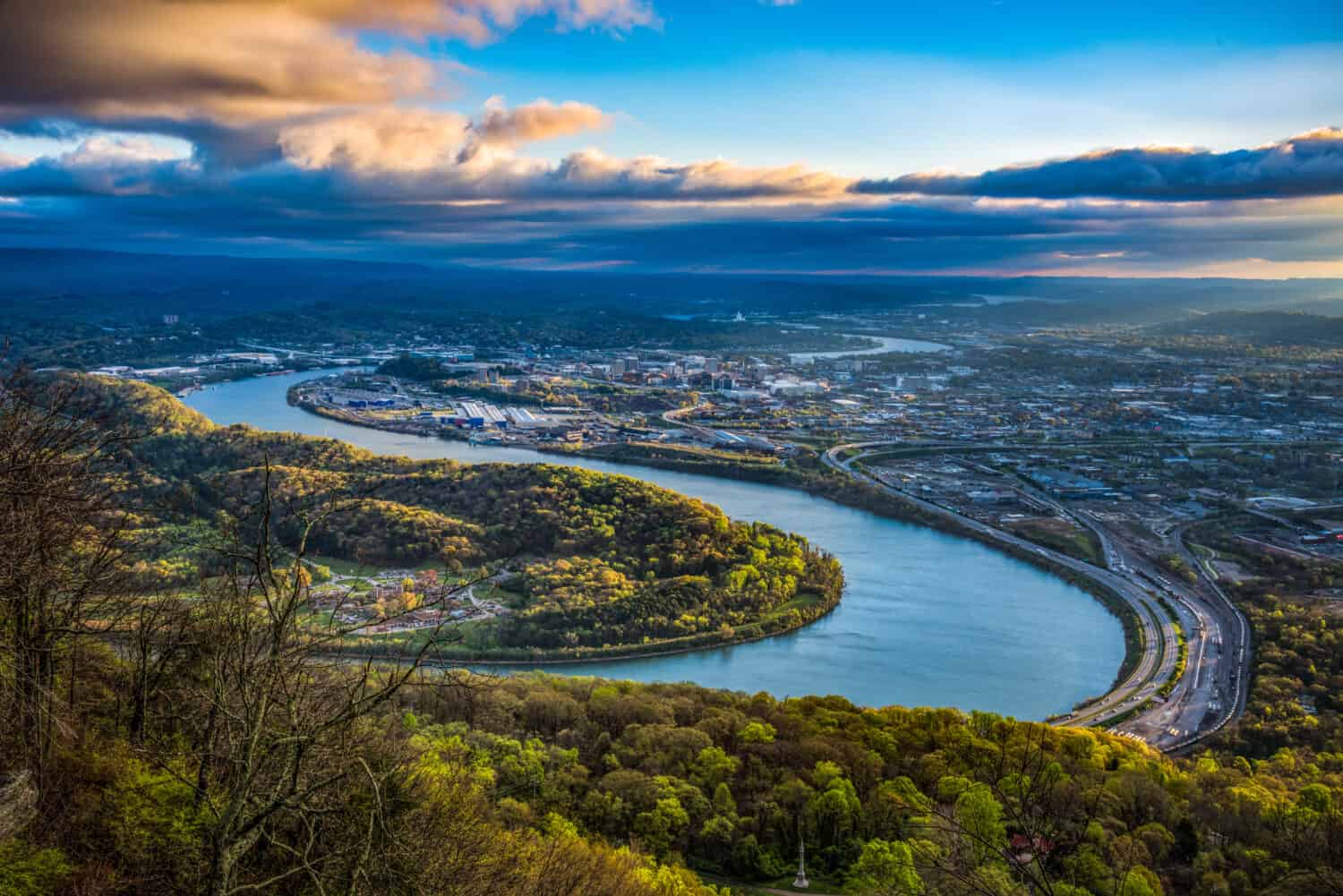
The Tennessee River runs straight through Chattanooga, Tennessee.
©Kevin Ruck/Shutterstock.com
The Tennessee River starts in Knoxville, Tennessee at the confluence of the French Broad and Holston Rivers. From there, it winds its way through Tennessee, down through Alabama, and eventually flows into the Ohio River in Kentucky. The river comes close to crossing into Georgia, missing it by just 250 feet.
The north-flowing river is used as the border between West Tennessee and Middle Tennessee, two of Tennessee’s three Grand Divisions. Additionally, the river also acts as a border between Alabama and Mississippi for a brief portion.
Additionally, the Tennessee River winds its way through a variety of different cities and towns and serves industrial purposes as it flows toward Paducah, Kentucky. It runs through Chattanooga, Tennessee, the fourth-largest city in Tennessee by population. Here, it’s used for shipping and carrying materials that are difficult to carry through the nearby Appalachian Mountains that surround the city. Additionally, the Tennessee River serves other large municipalities like Huntsville, Decatur, and Muscle Shoals, all of which are in Alabama.
The Tennessee River eventually finds its way north out of Tennessee, into Kentucky. In Paducah, it eventually flows into the larger Ohio River.
History of the Tennessee River
The Tennessee River has a long history dating back almost 8,000 years. Historians estimate this timeline because of excavations made at Russell Cave in Alabama, near the river. Hernando de Soto, the famed Spanish explorer and conquistador, also explored parts of the Tennessee River in 1540 while on an expedition. They camped along the river, in what is now Lawrenceburg, Tennessee.
It’s also known as the Cherokee River–the Cherokee people built their homelands along the banks of the Tennessee River. On a British map dating back to 1755, it’s labeled as the “River of the Cherakees”, before it became known as the Tennessee River. The word “Tennessee” derives from the name of a Cherokee village, Tanasi.
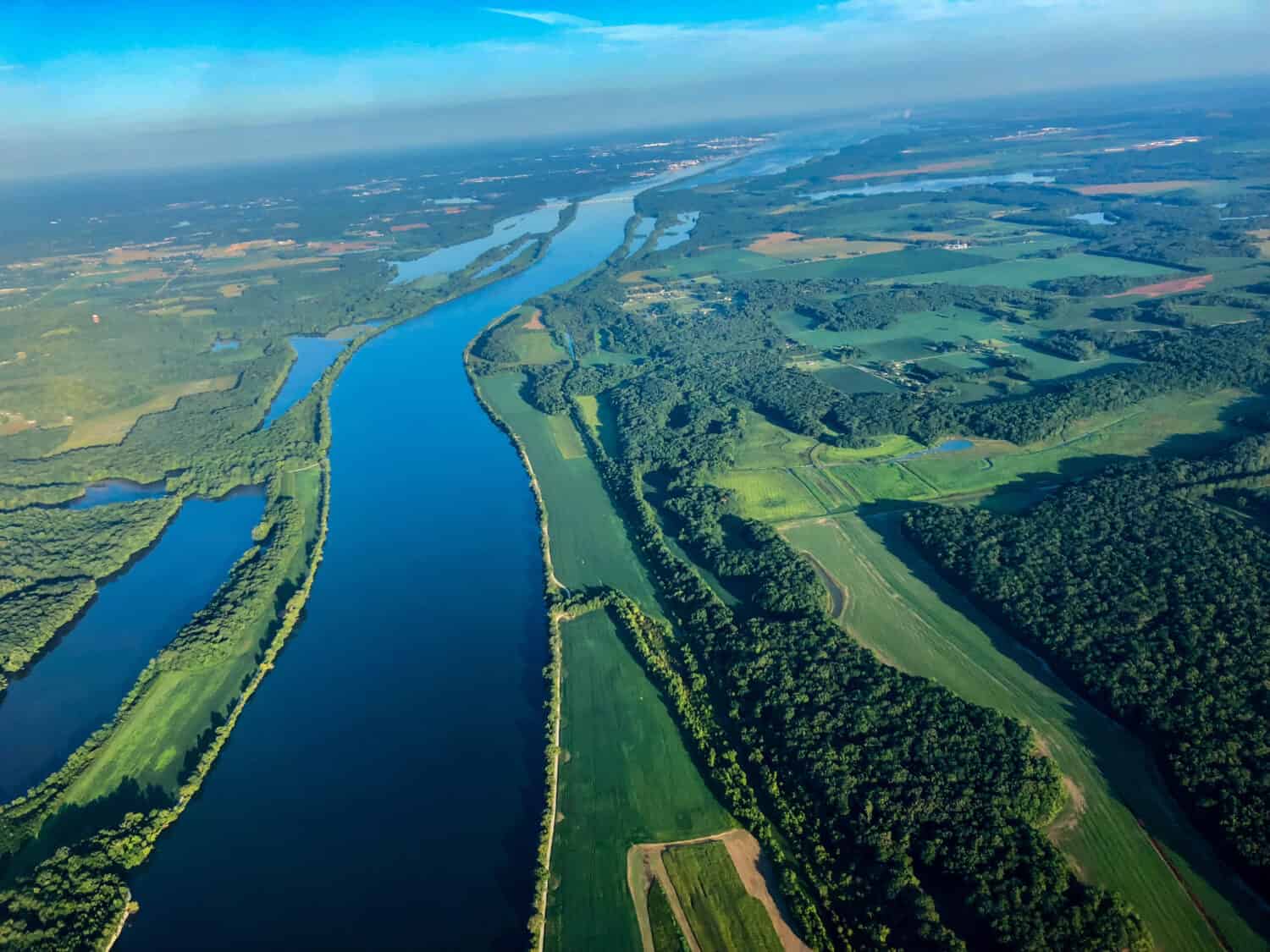
There’s evidence of settlers near the Tennessee River that date back almost 8,000 years ago.
©Dharris324/Shutterstock.com
The Tennessee River plays an important role throughout American history. During the Civil War, the Union sought out the river as they continued westward into the Confederacy. Many battles were fought throughout the Tennessee Valley and along the river. Chattanooga, Knoxville, and Shiloh, Tennessee were all subject to major battles. The Battle of Shiloh was one of the bloodiest battles of the Civil War–more than 23,000 American soldiers lost their lives by the end of it.
Dams Along the Tennessee River
In 1933, four years into the Great Depression, President Franklin Delano Roosevelt signed the Tennessee Valley Authority Act, thus creating the Tennessee Valley Authority, jobs, and a more efficient way to generate electricity.
The Tennessee Valley Authority was created with a simple goal in mind: to improve, modernize, and rejuvenate the region. It was proposed that dams be built as a way to generate electricity and also provide flood relief to a region prone to flooding. They’d be built along the actual river in addition to its tributaries and runoffs.

There are a number of dams along the Tennessee River that the TVA regulates.
©DWBMedias/Shutterstock.com
So, in 1933–the same year the Tennessee Valley Authority Act was signed–construction on the first dam broke ground. Norris Dam was completed in 1936. Eventually, the TVA became the nation’s largest electricity supplier, after building a 650-mile navigation channel. Additionally, the Chickamauga Dam prevented disaster from striking Chattanooga in 1957. The freshly constructed dam stopped one of the largest floods in the river’s history from covering Tennessee’s fourth-largest city.
Pollution in the Tennessee River
Unfortunately, as a result of the rapid industrialization of the Tennesee River, it’s become one of the most polluted rivers in the United States.
The Tennessee Valley Authority runs and operates approximately 45 dams along the river. In addition, it hosts 11 coal-fired power plants on its banks. This kind of industrialization has led to pollution problems in the river.
One of the worst examples of pollution to strike the the river occurred in 2008. The Kingston Fossil Plant, located in Harriman, Tennessee, had a dike (a wall or embankment used to prevent flooding) burst open. This accident caused over one billion gallons of wet coal ash to spread out over 300 acres and spilled over into Emory River and Clinch River, both tributaries of the Tennessee River. It was both an industrial and environmental disaster. While no one died in the initial spill, approximately 40 people died afterward as a result of contact with the toxic coal ash.
However, efforts are being made to help cleanup along the Tennessee River. A variety of organizations, like Keep the Tennessee River Beautiful, are actively hosting cleanups that safely clear pollution and other harmful things out of the river. They aim to maintain the river and keep it clean for generations to come.
Wildlife in the Tennessee River
The Tennessee River has an eclectic mix of wildlife that live in and around its waters. It is considered one of the most biodiverse aquatic ecosystems in North America. This is because of the many different kinds of water-based species that call it home. Bald eagles also are constantly being sighted around the river, as it has one of the largest nesting populations of bald eagles in the United States.
Mussels
Throughout all of its runoffs and tributaries, the Tennessee River is home to about 100 different kinds of mussels. Native Americans throughout the region used the freshwater mussels for food. The Mississippian culture would use crushed mussel shells in their pottery. They would mix the shells with the clay in order to strengthen the pottery. The river is an important commercial site because of the sheer amount of mussel species that live here. However, due to invasive species, dam construction, and water pollution, the mussel population here has drastically decreased in recent decades.
In addition to mussels, many different mammals call the this river home. Otters, beavers, and muskrats are often found throughout the river. Additionally, the river hosts almost 230 different fish species.
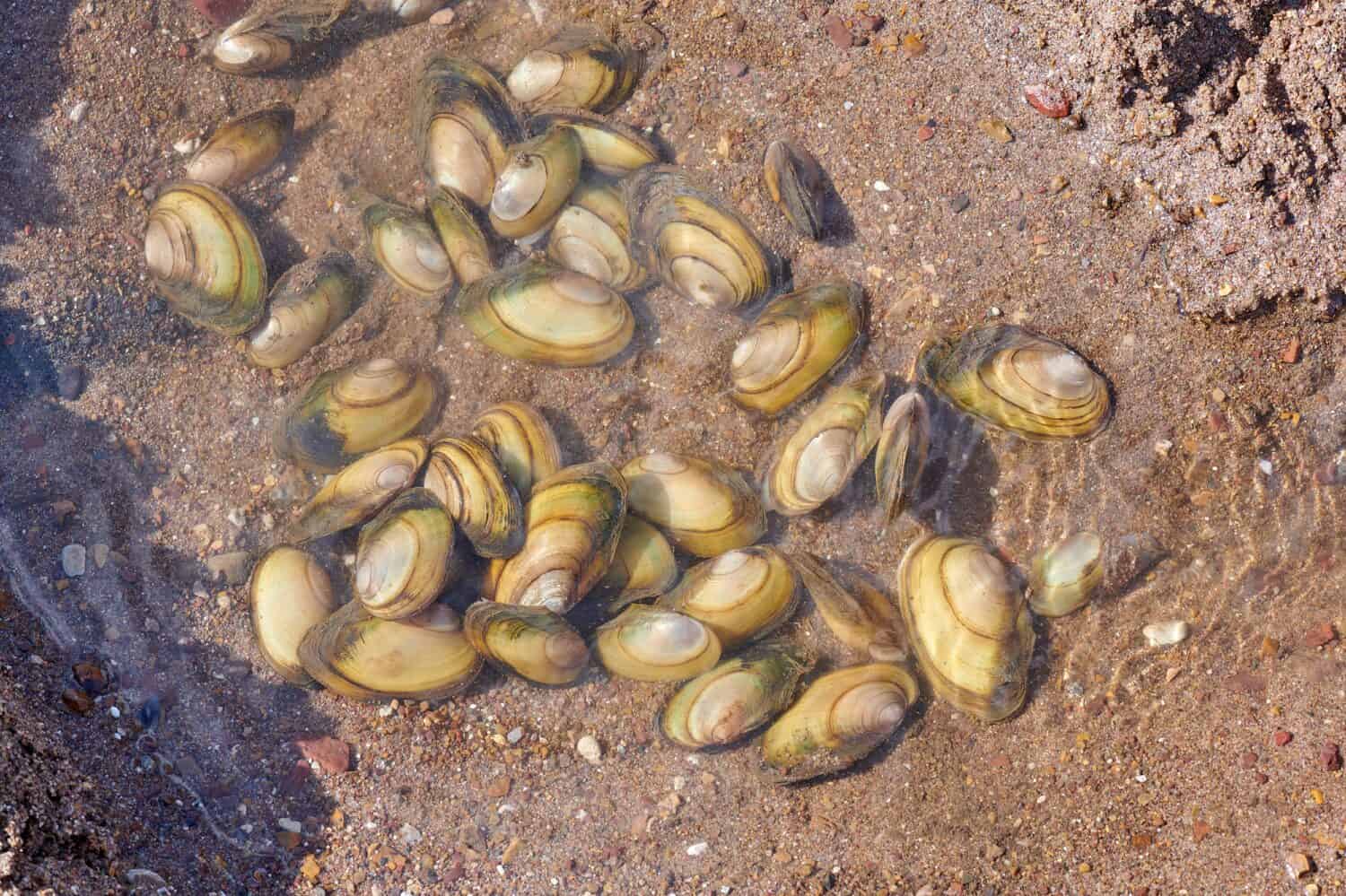
Mussels are found all throughout the Tennessee River.
©Vyacheslav Saltayev/Shutterstock.com
Fish
The snail darter (Percina tanasi) is found in the river, and is a native to East Tennessee fish. It’s a small fish that was considered endangered in 1975. However, in 1984 its status was changed, and it is now considered a threatened species. The lake sturgeon (Acipenser fulvescens) is an endangered species that also lives in the river. These sturgeons are massive creatures–they can get to be about 6.5 feet long and can weigh up to 240 pounds.
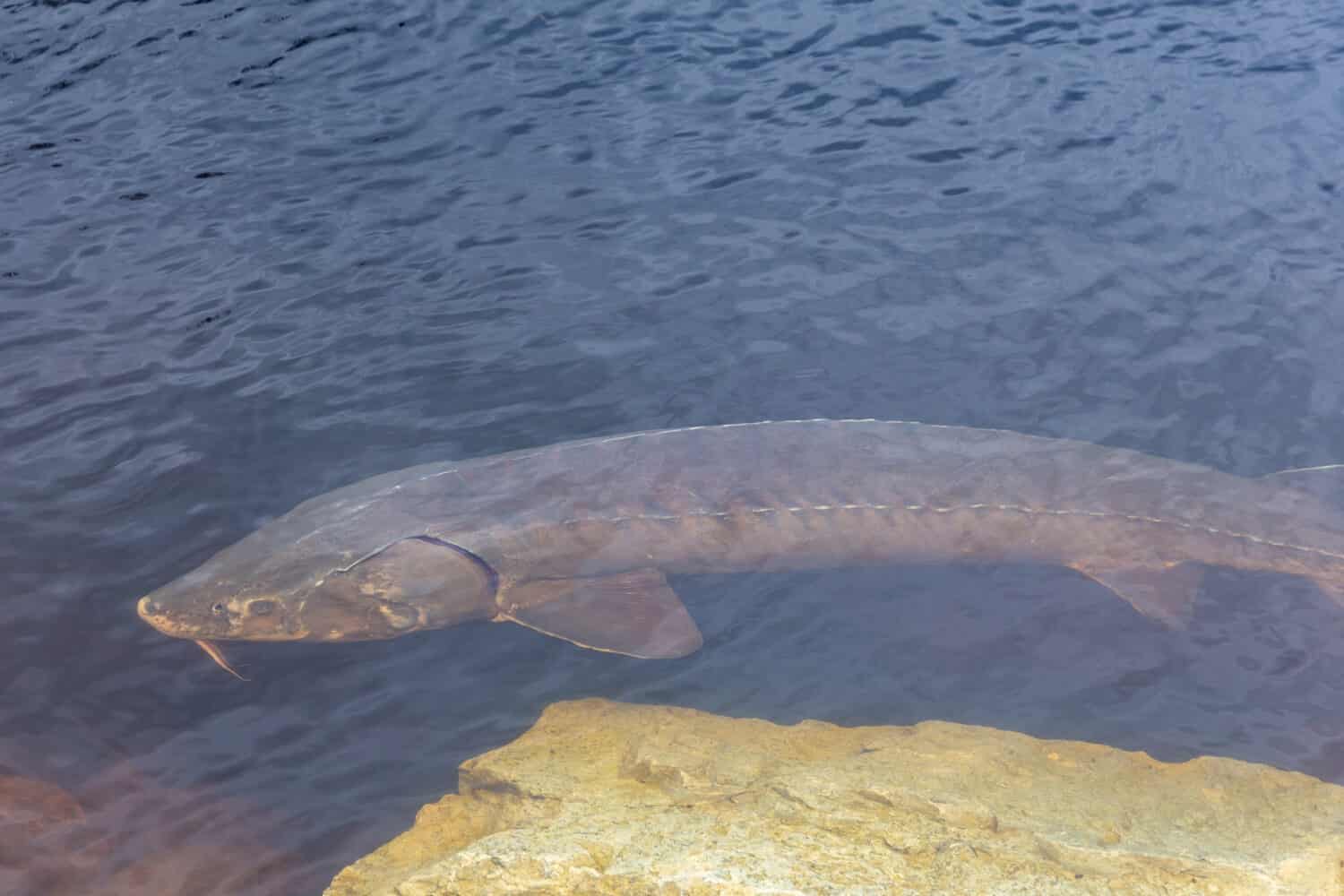
Lake sturgeons are one of the river’s many endangered species.
©James.Pintar/Shutterstock.com
Eagles
Finally, the bald eagle (Haliaeetus leucocephalus) is another incredible species that is found around the Tennessee River. During the winter, bald eagles will nest around large bodies of water, and often they can be seen along the banks of the river. Native to North America, the bald eagle is the nationally recognized symbol of the United States, and is protected by the Migratory Bird Treaty Act and the Bald Eagle and Golden Eagle Protection Act. They were once an endangered species, but have been delisted as their population numbers have gone up.
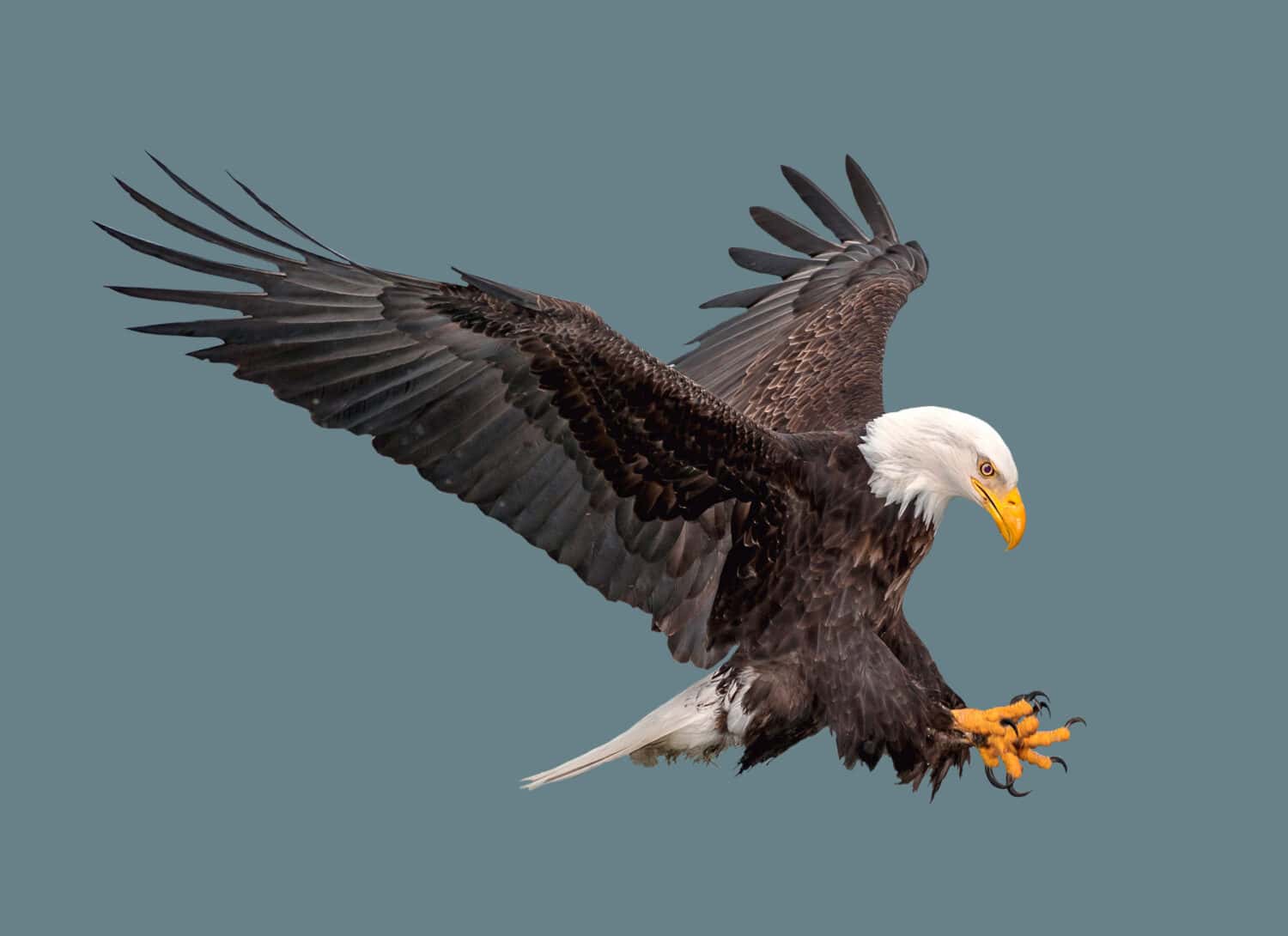
Bald eagles will nest along the banks of the Tennessee River during the winter.
©PHOTOOBJECT/Shutterstock.com
Conclusion
The Tennessee River starts in Knoxville, Tennessee, at the meeting of the French Broad River and the Holston River. From here, it flows approximately 650 miles, and winds its way through Tennessee, Alabama, and eventually feeds into the Ohio River in Paducah, Kentucky. It has a long, rich history and is home to many different kinds of animals. However, unfortunately, as a result of the industrialization of the river, it is one of the most polluted rivers in the United States. However, efforts are being made that will help clean the river up and maintain it, for us today and generations to come.
The photo featured at the top of this post is © Melinda Fawver/iStock via Getty Images
Thank you for reading! Have some feedback for us? Contact the AZ Animals editorial team.







